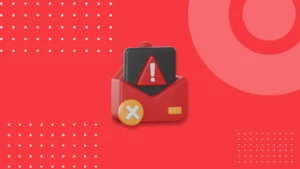
Introduction
As the year is coming to an end, Google has introduced its final spam update, which is expected to take one week to complete. This update is causing an uproar in the SEO and digital marketing field as it is targeting websites that are violating Google’s spam policies. This blog will highlight what this latest update includes, how it might affect websites and what can websites do to protect their sites from spam penalties.
(Source)
Why Was This Latest Update Launched?
The latest spam update was launched in order to improve Google’s systems for tracking down search spam, specifically enhancing SpamBrain, their AI-based spam protection system. Website owners, marketers, and SEO agencies should make sure that their websites comply with Google’s spam policies in order to prevent rank-dropping issues after this update. Violating Google’s spam policies can result in lower rankings and or removal of websites from Search Results.
Why This Update Matters
As Google continues to improve its algorithms, it becomes gradually easier to identify penalizing spammy practices, which are frequently used to illegally improve rankings. This final spam update of the year is likely to have significant impacts on websites in every sector, especially those that could be reliant on outdated and deceptive SEO techniques.
One of the significant features of this update is Google’s ability to detect and filter out spammy backlinks. If website owners are engaged in fraudulent link-building tactics, such as link purchasing, they might see a significant drop in their rankings.
How Can SEO Agencies or Website Admins Protect Their Site from Spam Penalties
In order to protect their websites from spam penalties. Here are a few tips that will help website admins, digital marketers, and a SEO agency avoid the negative effects of the latest spam updates.
-
Auditing Backlinks
Conducting a complete backlink audit can be highly beneficial for SEO agencies to make sure their sites are not linked to spammy or low-quality websites. Eliminate any links that seem unnatural, this will help prevent penalties and increase the site’s credibility.
-
Avoiding Misleading Practices
Avoid using exaggerated headlines or misleading content just for clicks. Craft content that aligns with the search intent of the users and offers meaningful answers to their questions.
-
Focusing on E-A-T (Expertise, Authoritativeness, and Trustworthiness)
Website owners and SEO agencies should make sure that their site is a trustworthy source of information. Showing expertise, gaining authoritative backlinks, and building trust with users are very important as Google prefers websites with high levels of E-A-T.
-
Fix Technical Issues
Poor technical SEO is a common problem for spam sites. So, SEO experts must make sure that their website has a smooth interface, fast loading speed, and no broken links. Google prefers sites with a good user experience. This includes both on-page and technical SEO.
Conclusion
Google’s final spam update of this year acts as both a warning and an opportunity. Digital Marketers, website admins, or a SEO expert who have been using spammy links, it is time to review and modify their websites. For individuals who are already focusing on offering value and adhering to ethical SEO practices. If a website complies with Google’s spam guidelines and prioritizes user experience, website owners will be prepared for any modifications the new year brings.